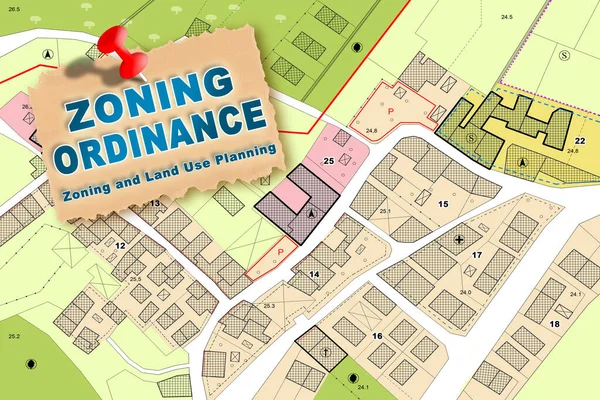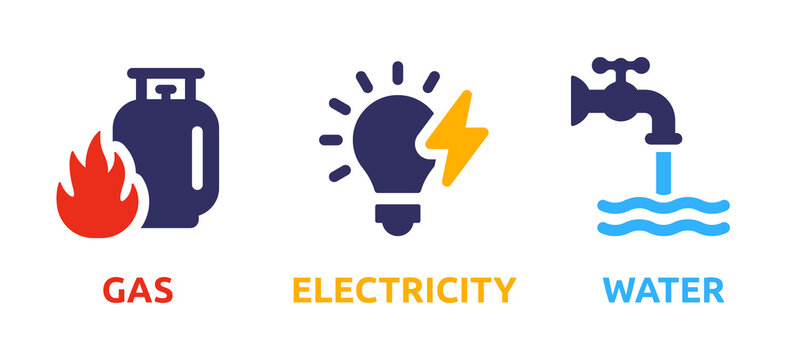When it comes to purchasing land, making informed decisions is crucial. A comprehensive checklist can serve as your compass, ensuring that you cover all essential aspects before committing to a purchase. By conducting thorough research and due diligence, you can mitigate potential risks and pave the way for a successful land acquisition.
The significance of a well-structured checklist cannot be overstated. From evaluating the property’s suitability for your intended use to assessing any regulatory restrictions, a systematic approach can help you navigate the complexities of land buying with confidence and clarity. In this post, we’ll explore the key components of a land buyer’s checklist and delve into why it’s an indispensable tool for anyone considering a land investment.
Location and Zoning

When purchasing land, it’s crucial to evaluate the location and understand zoning regulations. The location of the land plays a pivotal role in its potential use, accessibility, and future development.
Additionally, zoning regulations impact how the land can be utilized, including restrictions on building structures, property uses, and density.
Evaluate the Location
Assessing the location of the land is vital to understanding its suitability for intended purposes. It involves considering factors such as proximity to amenities, transportation infrastructure, environmental considerations, and neighboring properties. Evaluating the location allows potential land buyers to gauge its value, potential for appreciation, and alignment with their envisioned use.
Understand Zoning Regulations
Zoning regulations are instrumental in governing the permissible uses of land within specific areas. By understanding zoning ordinances and restrictions, land buyers can ascertain whether their intended use aligns with the designated zoning designation. Zoning laws can impact property development, building design, commercial activities, and the overall feasibility of the land for the desired purpose.
By carefully evaluating the location and comprehending zoning regulations, land buyers can make informed decisions, mitigate potential challenges, and maximize the value and utility of their land investment. Understanding the interplay between location and zoning empowers buyers to align their objectives with regulatory requirements and make confident investment choices.
Access to Utilities and Infrastructure
When purchasing land, it’s crucial to assess the availability of utilities and the existing infrastructure to ensure a comfortable and convenient living or development experience.
By thoroughly examining these aspects, you can make an informed decision about the suitability of the land for your needs.

Assess Availability of Utilities
One of the key considerations when buying land is the accessibility to essential utilities such as water, electricity, gas, and sewage. It’s important to determine whether these utilities are easily accessible or if additional infrastructure would be required. Assessing the availability of utilities will help you estimate the potential costs of connecting to these services and ensure that your land can support your intended use.
Examine Existing Infrastructure
In addition to utilities, it’s essential to examine the existing infrastructure surrounding the land. This includes road access, proximity to schools, hospitals, shopping centers, and other amenities. Evaluating the existing infrastructure will provide insight into the convenience and accessibility of the location, contributing to the overall value and desirability of the land.
By carefully evaluating the availability of utilities and the state of existing infrastructure, you can make an informed decision when purchasing land, ensuring that it aligns with your requirements and expectations.
Environmental Considerations

When buying land, it’s crucial to consider the environmental impact it may have. Environmental factors can significantly affect the value and potential use of the property.
It’s essential to assess two key sub-sections: Soil Quality and Drainage, and Environmental Impact Assessment.
Soil Quality and Drainage
Understanding the soil quality and drainage of the land is vital in determining its potential for various uses. Soil testing can reveal important information about the land, such as its nutrient levels, composition, and water retention capacity. Poor soil quality or inadequate drainage can limit opportunities for construction, agriculture, or other development plans. Additionally, it can impact the property’s susceptibility to erosion or flooding, affecting long-term viability and maintenance costs.
Environmental Impact Assessment
An environmental impact assessment is crucial to determine whether the land has any environmental issues, such as contaminated soils or polluted water sources. It involves evaluating potential contamination from factors such as underground gas tanks, pesticides, septic tanks, stormwater runoff, or other chemicals. Understanding these environmental risks is essential for making an informed decision and mitigating potential liabilities associated with the property.
Engaging a qualified environmental consultant or agency to conduct these assessments can provide valuable insights and help navigate any regulatory requirements or remediation efforts before finalizing the land purchase.
Considering these environmental factors upfront can protect your investment, ensure compliance with environmental regulations, and contribute to sustainable land management practices.
Legal and Financial Due Diligence
When considering the purchase of land, it’s crucial to conduct thorough legal and financial due diligence to mitigate potential risks and make informed decisions. Legal and financial due diligence involves scrutinizing various aspects of the property to ensure a transparent and secure transaction.
Title Search and Ownership History
Before finalizing a land purchase, conducting a comprehensive title search is imperative. This entails investigating the property’s ownership history to identify any existing liens, encumbrances, or legal disputes that could potentially affect the transfer of ownership. Additionally, it involves verifying the chain of title to ensure that the seller has the legal right to sell the property. By uncovering any title issues early in the process, buyers can avoid future complications and make informed decisions.
Financial Planning and Budgeting
Financial due diligence in land acquisition involves meticulous examination of the property’s financial aspects. This includes analyzing the property’s income, expenses, rental history, and appreciation potential. Buyers should also assess the property’s operating costs, such as taxes, insurance, and maintenance expenses, to accurately determine the financial implications of the acquisition.
Additionally, creating a comprehensive budget that encompasses acquisition costs, ongoing expenses, and potential development or improvement expenses is crucial for effective financial planning.
In conclusion, legal and financial due diligence forms the cornerstone of a successful land acquisition process. By delving into the title history and financial aspects of the property, buyers can navigate potential challenges and make well-informed decisions that align with their long-term goals.
Development Feasibility
When considering purchasing land for development, it’s crucial to assess the development feasibility to ensure a successful and profitable project.
This involves evaluating various factors that impact the potential for development, from the cost of development and building plans to environmental restrictions and easements.

Cost of Development and Building Plans
Before proceeding with land acquisition, it’s essential to thoroughly analyze the cost of development and create comprehensive building plans. This involves estimating the expenses associated with land preparation, infrastructure development, construction materials, labor, and related permits. The development budget should also account for potential cost overruns and unforeseen expenses to ensure financial preparedness throughout the project.
Developing detailed building plans is equally important as it provides a clear roadmap for the construction process, ensuring efficient use of resources and adherence to regulatory requirements. A well-defined building plan accounts for factors such as architectural design, structural integrity, energy efficiency, and compliance with zoning regulations and building codes.
Environmental Restrictions and Easements
Understanding the environmental landscape surrounding the potential development site is critical for both regulatory compliance and sustainable land use. Environmental restrictions, such as protected habitats, water bodies, or designated conservation areas, must be carefully evaluated to assess their impact on the development process. Additionally, existing easements or encumbrances on the land can affect the proposed use and must be thoroughly researched to avoid potential conflicts.
Conducting a comprehensive environmental assessment and obtaining relevant permits and clearances can mitigate the risk of regulatory hurdles and environmental liabilities during the development phase. Engaging with environmental consultants and regulatory authorities can provide valuable insights into the necessary precautions and best practices for environmentally responsible development.
By thoroughly evaluating the cost of development, building plans, environmental restrictions, and easements, potential land buyers can make informed decisions regarding the feasibility and viability of their development endeavors. This due diligence lays the foundation for successful land acquisition and sets the stage for efficient and sustainable development projects.
Physical Inspection of the Land
When purchasing land, conducting a physical inspection is crucial to gain a comprehensive understanding of the property’s condition and characteristics. This involves walking the property to survey its boundaries and evaluating its natural features and topography.
Walk the Property and Survey Boundaries
Begin the physical inspection by walking the entire property and surveying its boundaries. This allows you to familiarize yourself with the land’s layout and dimensions. Pay attention to any border markings, fences, or neighboring structures. It’s essential to verify that the property boundaries align with the information presented in the land survey and legal documents. This step helps in identifying any encroachments or discrepancies that may impact the property’s integrity.
Assess Natural Features and Topography
Next, assess the land’s natural features and topography. Take note of any hills, slopes, bodies of water, or vegetation that could impact the intended use of the property. Consider the soil quality and drainage patterns to understand the land’s suitability for construction or agricultural purposes. Evaluating these natural elements is crucial for making informed decisions about the land’s potential and limitations.
Conducting a thorough physical inspection provides valuable insights that influence your decision-making process when purchasing land. By carefully examining the property and its features, you gain a clear understanding of its characteristics and can proceed with confidence in your investment.
In the land buyer’s checklist, it is evident that thorough assessment and professional guidance are essential for making an informed land purchase decision. By summarizing critical aspects such as legal considerations, environmental assessments, and zoning regulations, buyers are better equipped to navigate the complexities of land acquisition.
It’s crucial to engage with experts in real estate law, environmental engineering, and land use planning to ensure all facets of the property are thoroughly evaluated. This level of attention and expertise will pave the way for confident and informed decisions, leading to successful land purchases.

